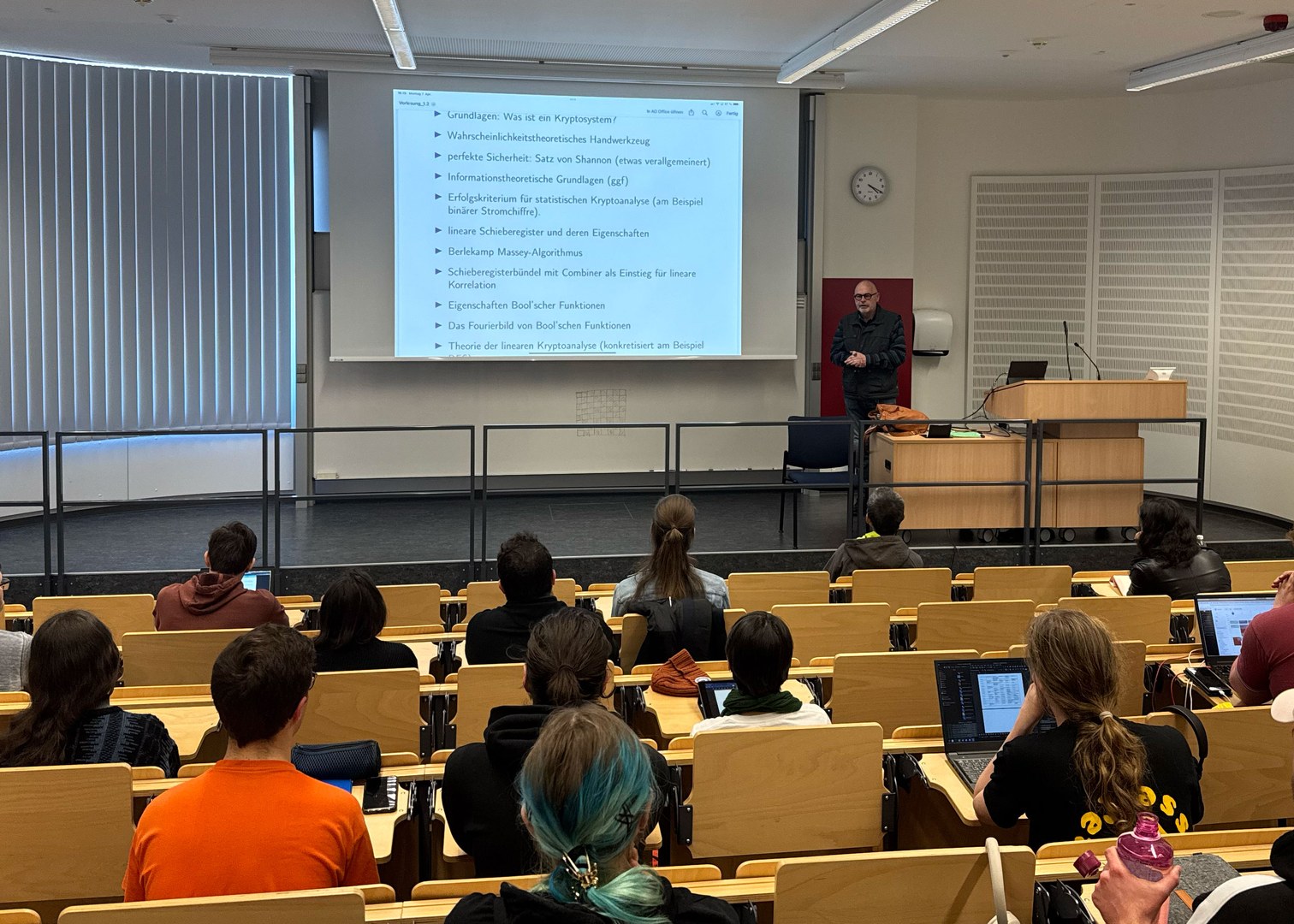After many years in the management of public authorities, the move to the lecture hall is not a new beginning for Schabhüser, rather a return: he already enjoyed teaching during his time as a research assistant at the University of Münster and the FernUniversität in Hagen. Today, his motivation to return to university education stems primarily from one aspiration: to teach students not only the theoretical foundations, but also the practical tools of cryptography.
Cryptanalysis, probability models and practical relevance
The content of his course reflects this attitude. They range from methods of practical decryption and the theory of perfect security to the analysis and design of modern encryption systems. Probability models, Boolean functions and linear approximations as cryptanalysis tools are also on the agenda — always combined with concrete application examples.
Schabhüser is particularly interested in not only explaining mathematical concepts in abstract terms, but also making their implementation in real algorithms comprehensible. “Cryptography is a basic technology,” he emphasizes — and one that relies heavily on mathematical thinking. He was particularly influenced by a sentence from his early professional career: “My cryptography teacher and first real boss once said with regard to digitalization: cryptography is not everything — but without cryptography, everything is nothing. What could be better for a mathematician?”
Holistic perspective on cyber security
Schabhüser learned early on that this technology is not a theory without consequences. In his very first year at the BSI, he and a colleague managed to break a public key cryptosystem that was actually considered secure — a moment that still shapes him today and illustrates how important critical thinking and attack perspectives are in IT security.
Accordingly, the mathematician emphasizes the importance of holistic security strategies — both for IT specialists and for organizations as a whole. Today, cyber security must be seen as an integral part of risk management. He advises IT specialists to implement “security by design” and to anchor information security as a quality criterion in products and services.
Schabhüser formulates modest but clear expectations for his time at the Institute of Computer Science: a good course, motivated students — and perhaps also new impulses from the exchange with colleagues and participants. His central message to the students is concise and to the point: “Design information technology — but with common sense.”
